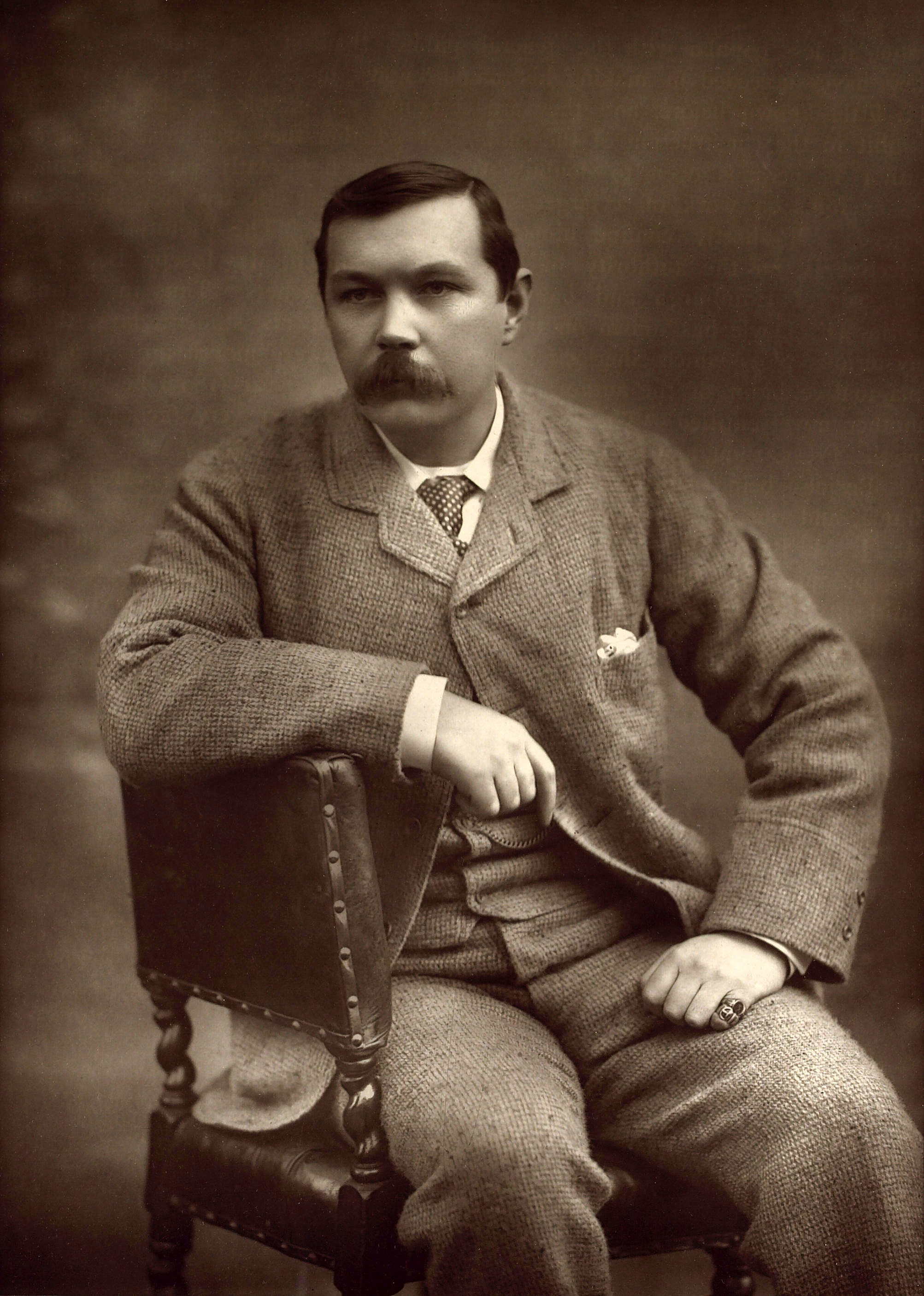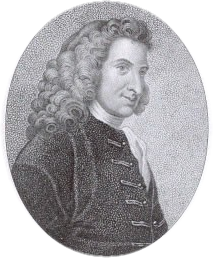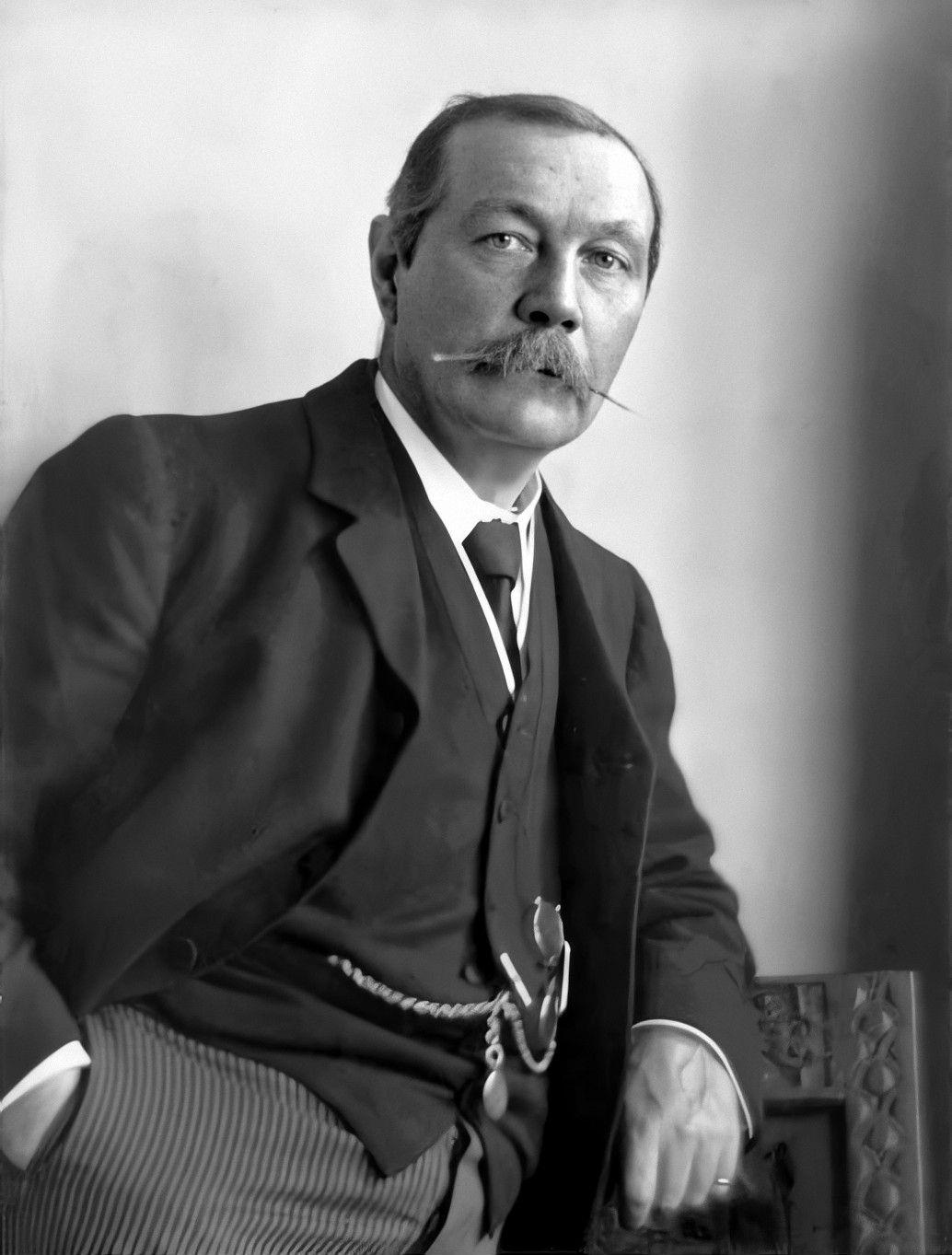|
James Edward Preston Muddock
James Edward Preston Muddock also known as "Joyce Emmerson Preston Muddock" and "Dick Donovan" (28 May 1843 – 23 January 1934), was a prolific British journalist and author of mystery and horror fiction. For a time his detective stories were as popular as those of Arthur Conan Doyle. Between 1889 and 1922 he published nearly 300 detective and mystery stories. Life Muddock was the third of four children, born near Southampton, England, to sea captain James Muddock and Elizabeth Preston. At 14 he travelled to India. During his journalistic career he travelled to China, the United States, and Australia. Muddock's father had made poor investments and was compelled to work overseas, so Muddock rarely saw his father in his early years. By 1870 Muddock had started publishing serial stories in English newspapers. Family Muddock had been married three times, in 1861, in 1871 and in 1880, with ten children who survived infancy.http://gadetection.pbworks.com/w/page/7930475/Donovan%2C ... [...More Info...] [...Related Items...] OR: [Wikipedia] [Google] [Baidu] |
Arthur Conan Doyle
Sir Arthur Ignatius Conan Doyle (22 May 1859 – 7 July 1930) was a British writer and physician. He created the character Sherlock Holmes in 1887 for ''A Study in Scarlet'', the first of four novels and fifty-six short stories about Holmes and Dr. Watson. The Sherlock Holmes stories are milestones in the field of crime fiction. Doyle was a prolific writer; other than Holmes stories, his works include fantasy and science fiction stories about Professor Challenger and humorous stories about the Napoleonic soldier Brigadier Gerard, as well as plays, romances, poetry, non-fiction, and historical novels. One of Doyle's early short stories, " J. Habakuk Jephson's Statement" (1884), helped to popularise the mystery of the ''Mary Celeste''. Name Doyle is often referred to as "Sir Arthur Conan Doyle" or "Conan Doyle", implying that "Conan" is part of a compound surname rather than a middle name. His baptism entry in the register of St Mary's Cathedral, Edinburgh, gives "Arth ... [...More Info...] [...Related Items...] OR: [Wikipedia] [Google] [Baidu] |
Southampton
Southampton () is a port city in the ceremonial county of Hampshire in southern England. It is located approximately south-west of London and west of Portsmouth. The city forms part of the South Hampshire built-up area, which also covers Portsmouth and the towns of Havant, Waterlooville, Eastleigh, Fareham and Gosport. A major port, and close to the New Forest, it lies at the northernmost point of Southampton Water, at the confluence of the River Test and Itchen, with the River Hamble joining to the south. Southampton is classified as a Medium-Port City . Southampton was the departure point for the and home to 500 of the people who perished on board. The Spitfire was built in the city and Southampton has a strong association with the ''Mayflower'', being the departure point before the vessel was forced to return to Plymouth. In the past century, the city was one of Europe's main ports for ocean liners and more recently, Southampton is known as the home port of some of ... [...More Info...] [...Related Items...] OR: [Wikipedia] [Google] [Baidu] |
Figure Skater
Figure skating is a sport in which individuals, pairs, or groups perform on figure skates on ice. It was the first winter sport to be included in the Olympic Games, when contested at the 1908 Olympics in London. The Olympic disciplines are men's singles, women's singles, pair skating, and ice dance; the four individual disciplines are also combined into a team event, first included in the Winter Olympics in 2014. The non-Olympic disciplines include synchronized skating, Theater on Ice, and four skating. From intermediate through senior-level competition, skaters generally perform two programs (the short program and the free skate), which, depending on the discipline, may include spins, jumps, moves in the field, lifts, throw jumps, death spirals, and other elements or moves. Figure skaters compete at various levels from beginner up to the Olympic level (senior) at local, regional, sectional, national, and international competitions. The International Skating Union (IS ... [...More Info...] [...Related Items...] OR: [Wikipedia] [Google] [Baidu] |
Dorothy Greenhough-Smith
Dorothy Greenhough-Smith (27 September 1882 – 9 May 1965) was a British figure skater. She was born Dorothy Vernon Muddock in Stokesley, North Riding of Yorkshire, the daughter of writer James Edward Preston Muddock, and married publisher/editor Herbert Greenhough Smithhis Times obituary mentions her skating prowess in 1900. Greenhough-Smith won the bronze medal at the 1908 Summer Olympics, the first Olympics where figure skating was contested. She was the 1912 World silver medalist, which was the first silver medal in ladies skating for Great Britain (Madge Syers having won the silver in ''men's'' singles). She never competed at the European Figure Skating Championships The European Figure Skating Championships is an annual figure skating competition in which figure skaters compete for the title of European champion. Medals are awarded in the disciplines of men's singles, women's singles, pair skating, an ... because the ladies event was not added to the pro ... [...More Info...] [...Related Items...] OR: [Wikipedia] [Google] [Baidu] |
Eva Mudocci
Eva Mudocci (1872–1953), born Evangeline Hope Muddock, was an English violinist, who toured Europe with the pianist Bella Edwards. She was the friend and probably lover of the artist Edvard Munch. Early life She was born Evangeline Hope Muddock in 1872 in Brixton, London, the daughter of the British journalist and author J. E. Preston Muddock and his wife, Lucy Mary Hann, a violinist.About Eva Mudocci , evamudocci.com Retrieved 24 July 2019. Career Mudocci first played the violin in public at the age of nine, as Miss Rose Lynton, which was how she was known for the first decade of her career. As a child, she performed both regionally and nationally within England. Her formal debut was at |
Edvard Munch
Edvard Munch ( , ; 12 December 1863 – 23 January 1944) was a Norwegian painter. His best known work, ''The Scream'' (1893), has become one of Western art's most iconic images. His childhood was overshadowed by illness, bereavement and the dread of inheriting a mental condition that ran in the family. Studying at the Royal School of Art and Design in Kristiania (today's Oslo), Munch began to live a bohemian life under the influence of the nihilist Hans Jæger, who urged him to paint his own emotional and psychological state (' soul painting'). From this emerged his distinctive style. Travel brought new influences and outlets. In Paris, he learned much from Paul Gauguin, Vincent van Gogh and Henri de Toulouse-Lautrec, especially their use of color. In Berlin, he met the Swedish dramatist August Strindberg, whom he painted, as he embarked on a major series of paintings he would later call ''The Frieze of Life'', depicting a series of deeply-felt themes such as love, anxiety, je ... [...More Info...] [...Related Items...] OR: [Wikipedia] [Google] [Baidu] |
Charles Le Gai Eaton
Charles le Gai Eaton (also known as Hasan le Gai Eaton or Hassan Abdul Hakeem; 1 January 1921 – 2010) was a British diplomat, writer, historian, and Sufi Islamic scholar. Life and career Early life Born in Lausanne, Switzerland, and raised in London under the name Gai, Eaton was the son of the married Francis Errington and his mistress, Ruth; to hide her son's illegitimacy, Ruth claimed that she had been married to a Canadian, Charles Eaton (an invention of Errington's, by then supposedly deceased), and that Charles had fathered the child. Eaton knew Errington only as a friend of the family until the age of 16, when his mother revealed the truth of his parentage. Brought up agnostic, Eaton was educated at Charterhouse School and King's College, Cambridge, where he studied history and entered into a correspondence with the novelist Leo Myers. Diplomatic career Having been passed over for military service during the Second World War, in the late 1940s and early 1950s he work ... [...More Info...] [...Related Items...] OR: [Wikipedia] [Google] [Baidu] |
Glasgow
Glasgow ( ; sco, Glesca or ; gd, Glaschu ) is the most populous city in Scotland and the fourth-most populous city in the United Kingdom, as well as being the 27th largest city by population in Europe. In 2020, it had an estimated population of 635,640. Straddling the border between historic Lanarkshire and Renfrewshire, the city now forms the Glasgow City Council area, one of the 32 council areas of Scotland, and is governed by Glasgow City Council. It is situated on the River Clyde in the country's West Central Lowlands. Glasgow has the largest economy in Scotland and the third-highest GDP per capita of any city in the UK. Glasgow's major cultural institutions – the Burrell Collection, Kelvingrove Art Gallery and Museum, the Royal Conservatoire of Scotland, the Royal Scottish National Orchestra, Scottish Ballet and Scottish Opera – enjoy international reputations. The city was the European Capital of Culture in 1990 and is notable for its architecture, cult ... [...More Info...] [...Related Items...] OR: [Wikipedia] [Google] [Baidu] |
Bow Street Runners
The Bow Street Runners were the law enforcement officers of the Bow Street Magistrates' Court in the City of Westminster. They have been called London's first professional police force. The force originally numbered six men and was founded in 1749 by magistrate Henry Fielding, who was also well known as an author. ''Bow Street Runners'' was the public's nickname for the officers although the officers did not use the term themselves and considered it derogatory. The group was disbanded in 1839 and its personnel merged with the Metropolitan Police. The Metropolitan Police Detective Agency traces their origin back to them. History The Bow Street Runners are considered the first British police force. Before the force was founded, the law enforcing system was in the hands of private citizens and single individuals with very little intervention from the state. Magistrate Henry Fielding decided to regulate and legalise their activity due to high rates of corruption and mistaken or mal ... [...More Info...] [...Related Items...] OR: [Wikipedia] [Google] [Baidu] |
The Strand Magazine
''The Strand Magazine'' was a monthly British magazine founded by George Newnes, composed of short fiction and general interest articles. It was published in the United Kingdom from January 1891 to March 1950, running to 711 issues, though the first issue was on sale well before Christmas 1890. Its immediate popularity is evidenced by an initial sale of nearly 300,000. Sales increased in the early months, before settling down to a circulation of almost 500,000 copies a month, which lasted well into the 1930s. It was edited by Herbert Greenhough Smith from 1891 to 1930. The popularity of Sherlock Holmes became widespread after first appearing in the magazine in 1891. The magazine's original offices were on Burleigh Street off The Strand, London. It was revived in 1998 as a quarterly magazine. Publication history ''The Strand Magazine'' was founded by George Newnes in 1890, and its first edition was dated January 1891. The magazine's original offices were located on Burleigh S ... [...More Info...] [...Related Items...] OR: [Wikipedia] [Google] [Baidu] |
Sherlock Holmes
Sherlock Holmes () is a fictional detective created by British author Arthur Conan Doyle. Referring to himself as a " consulting detective" in the stories, Holmes is known for his proficiency with observation, deduction, forensic science and logical reasoning that borders on the fantastic, which he employs when investigating cases for a wide variety of clients, including Scotland Yard. First appearing in print in 1887's ''A Study in Scarlet'', the character's popularity became widespread with the first series of short stories in ''The Strand Magazine'', beginning with " A Scandal in Bohemia" in 1891; additional tales appeared from then until 1927, eventually totalling four novels and 56 short stories. All but one are set in the Victorian or Edwardian eras, between about 1880 and 1914. Most are narrated by the character of Holmes's friend and biographer Dr. John H. Watson, who usually accompanies Holmes during his investigations and often shares quarters with him at the ad ... [...More Info...] [...Related Items...] OR: [Wikipedia] [Google] [Baidu] |
Flin Flon
Flin Flon (pop. 5,185 in 2016 census; 4,982 in Manitoba and 203 in Saskatchewan) is a mining city, located on a correction line on the border of the Canadian provinces of Manitoba and Saskatchewan, with the majority of the city located within Manitoba. Residents thus travel southwest into Saskatchewan, and northeast into Manitoba. The city is incorporated in and is jointly administered by both provinces. Etymology The town's name is taken from the lead character in a 1905 paperback novel, ''The Sunless City'' by J. E. Preston Muddock. Josiah Flintabbatey Flonatin piloted a submarine into a bottomless lake where he sailed through a hole lined with gold to enter a strange underground world. A copy of the book was allegedly found and read by prospector Tom Creighton. When Tom Creighton discovered a high-grade exposure of copper, he thought of the book and called it Flin Flon's mine, and the town that developed around the mine adopted the name. Flin Flon shares the distinction ... [...More Info...] [...Related Items...] OR: [Wikipedia] [Google] [Baidu] |



.jpg)


%2C_vol._65%2C_no._321%2C_September_1917.jpg)
